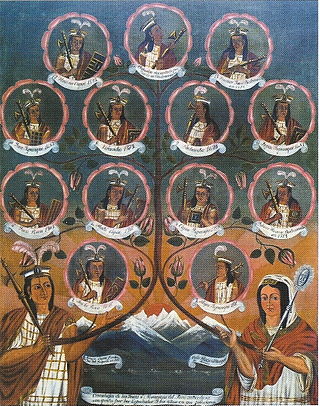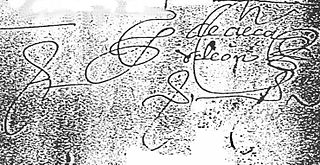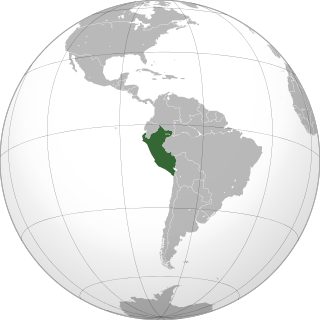Related Research Articles

Sinchi Roca, Sinchi Rocca, Cinchi Roca, Sinchi Ruq'a or Sinchi Ruq'a Inka was the second Sapa Inca of the Kingdom of Cusco and a member of the Hurin dynasty.

The Chachapoyas, also called the "Warriors of the Clouds", was a culture of the Andes living in the cloud forests of the southern part of the Department of Amazonas of present-day Peru. The Inca Empire conquered their civilization shortly before the Spanish conquest in the 16th century. At the time of the arrival of the conquistadors, the Chachapoyas were one of the many nations ruled by the Incas, although their incorporation had been difficult due to their constant resistance to Inca troops.

Inca Garcilaso de la Vega, born Gómez Suárez de Figueroa and known as El Inca, was a chronicler and writer born in the Viceroyalty of Peru. Sailing to Spain at 21, he was educated informally there, where he lived and worked the rest of his life. The natural son of a Spanish conquistador and an Inca noblewoman born in the early years of the conquest, he is known primarily for his chronicles of Inca history, culture, and society. His work was widely read in Europe, influential and well received. It was the first literature by an author born in the Americas to enter the western canon.

A chasqui was a messenger of the Inca empire. Agile, highly trained and physically fit, they were in charge of carrying messages in the form of quipus, oral information, or small packets. Along the Inca road system there were relay stations called chaskiwasi, placed at about 2.5 kilometres (1.6 mi) from each other, where the chasqui switched, exchanging their message(s) with the fresh messenger. The chasqui system could be able to deliver a message or a gift along a distance of up to 300 kilometres (190 mi) per day.

The Battle of the Maule was fought between a coalition of Mapuche people of Chile and the Inca Empire of Peru. Traditionally this battle is held to have occurred near what is now Maule River, in Central Chile. The account of Garcilaso de la Vega depicts the three-day battle, which is generally believed to have occurred in the reign of Tupac Inca Yupanqui.

The Incas were most notable for establishing the Inca Empire which was centered in modern-day South America in Peru and Chile. It was about 4,000 kilometres (2,500 mi) from the northern to southern tip. The Inca Empire lasted from 1438 to 1533. It was the largest Empire in America throughout the Pre-Columbian era. The Inca state was known as the Kingdom of Cuzco before 1438. Over the course of the Inca Empire, the Inca used conquest and peaceful assimilation to incorporate the territory of modern-day Peru, followed by a large portion of western South America, into their empire, centered on the Andean mountain range. However, shortly after the Inca Civil War, the last Sapa Inca (emperor) of the Inca Empire was captured and killed on the orders of the conquistador Francisco Pizarro, marking the beginning of Spanish rule. The remnants of the empire retreated to the remote jungles of Vilcabamba and established the small Neo-Inca State, which was conquered by the Spanish in 1572.

Pedro Cieza de León was a Spanish conquistador and chronicler of Peru and Popayán. He is known primarily for his extensive work, Crónicas del Perú, which has been a source of knowledge for centuries for different disciplines such as history, philology, geography, biology, anthropology, botany and zoology. He wrote this book in four parts, but only the first was published during his lifetime; the remaining sections were not published until the 19th and 20th centuries.
The term Peruvian literature not only refers to literature produced in the independent Republic of Peru, but also to literature produced in the Viceroyalty of Peru during the country's colonial period, and to oral artistic forms created by diverse ethnic groups that existed in the area during the prehispanic period, such as the Quechua, the Aymara and the Chanka South American native groups.

Coricancha, Curicancha, Koricancha, Qoricancha or Qorikancha was the most important temple in the Inca Empire, and was described by early Spanish colonialists. It is located in Cusco, Peru, which was the capital of the empire.

Rodolfo Cerrón Palomino is a Peruvian linguist who has crucially contributed to the investigation and development of the Quechuan languages. He has also made outstanding contributions to the study of the Aymara, Mochica and Chipaya languages.

The Comentarios Reales de los Incas is a book written by Inca Garcilaso de la Vega, the first published mestizo writer of colonial Andean South America. The Comentarios Reales de los Incas is considered by most to be the unquestioned masterpiece of Inca Garcilaso de la Vega, born of the first generation after the Spanish conquest.

The Kingdom of Cusco, also called the Cusco confederation, was a small kingdom based in the Andean city of Cusco that began as a small city-state founded by the Incas around the start of 13th century. In time, through warfare or peaceful assimilation, it began to grow into the Inca Empire (1438–1533).

Lesbian, gay, bisexual, and transgender (LGBT) people in Peru face some legal challenges not experienced by other residents. Same-sex sexual activity among consenting adults is legal. However, households headed by same-sex couples are not eligible for the same legal protections available to opposite-sex couples.
Promaucae, also spelled as Promaucas or Purumaucas, were an indigenous pre-Columbian Mapuche tribal group that lived in the present territory of Chile, south of the Maipo River basin of Santiago, Chile and the Itata River. Those to the north were called Quillotanes and Mapochoes by the Spanish colonists). They spoke Mapudungun, like the Moluche to the south, and were part of the Picunche tribe that lived north of the Itata River.
Ayaviri or Ayawiri (Aymara) is a town in Southern Peru, capital of the province Melgar in the region Puno. According to the 2007 Peruvian census, Ayaviri has a population of 22,667 people. Local festivities of note include the Festividad de Calendaria on January 24 and the Aniversario de la Provincia on October 25.

Some evidence for homosexual behavior in pre-Columbian Peru has survived since the Spanish conquest of Peru in the form of erotic ceramics. Such pottery originated from several ancient civilizations of Peru, the most famous of these being the Moche and Chimu cultures.

Pedro de Candia was a Greek explorer and cartographer at the service of the Kingdom of Spain, an officer of the Royal Spanish Navy that under the Spanish Crown became a Conquistador, Grandee of Spain, Commander of the Royal Spanish Fleet of the Southern Sea, Colonial Ordinance of Cusco, and then Mayor of Lima between 1534 and 1535. Specialized in the use of firearms and artillery, he was one of the earliest explorers of Panama and the Pacific coastline of Colombia, and finally participated in the conquest of Peru. He was killed in the Battle of Chupas, (Peru), on 16 September 1542, by Diego de Almagro II.

Yanaca is a group of ancient, pre-Incan towns located in Peru in Apurimac Region, Aymaraes Province, Yanaca District. These towns were located in the area surrounding the present-day town of Yanaca in the Andes mountain range, between the Quechua and Suni regions.

Muyuq Marka, also Muyuqmarka, is an archaeological site in Peru. It is the base of what was a round Incan tower, which is situated within the fortress Saksaywaman above Cuzco. It was used as a Temple of Inti, but became part of a complex of rectangular buildings which mostly still remain today. However, the temple and the two flanking towers were dismantled during the Spanish rule. What remains of Muyuq Marka indicates that it was "a round building with an open central court which had a fountain." The temple had triple walls, which were aligned with the zenith sunrise and the antizenith sunset.

The Second part of the royal commentary better known as the General history of Peru, is a historical literary work written by Inca Garcilaso de la Vega, the first Peruvian and Spanish mestizo of intellectual renown. It was published in 1617, in Córdoba, Spain, a year after the death of its author, and was dedicated to the Virgin Mary. It is the continuation of the Comentarios reales de los incas, and was published in a crucial period of the history of Peru, which began with the arrival of the Spanish and ended with the execution of the final Inca of Vilcabamba, Túpac Amaru I, in 1572. Aside from the historical motive of the text, the author sought through this second part of his work to praise his Spanish heritage, as he had done with his indigenous heritage in the first part of his work.
References
- ↑ Candela Alva, Juan José (5 March 2010). "Los huacos eróticos en la cultura Mochica | Peruanos en el exterior". rpp.com.pe. Archived from the original on 27 June 2015. Retrieved 18 April 2018.
- ↑ "Los huacos eróticos de la cultura Mochica". Lamula.pe (in Spanish). 9 August 2010. Retrieved 18 April 2018.
- ↑ Villalobos, José Luis (5 January 2014). "La homosexualidad en las culturas precolombinas". Cáscara amarga. Archived from the original on 19 April 2018. Retrieved 18 April 2018.
- ↑ Crompton, Louis (2003). Homosexuality and Civilisation. Cambridge, MA: Harvard University Press. ISBN 978-0-674-03006-0 . Retrieved 8 August 2011.
- 1 2 González Arenas, Mauricio; Gamboa, César (28 August 2014). Actitudes homofóbicas entre los indígenas del Nuevo Mundo: los casos azteca, inca y mapuche en fuentes de los siglos XVI y XVII. Centro de Estudios Históricos, Universidad Bernardo O’Higgins. p. 368.
- ↑ "Liesder Mayea Rodríguez: Un análisis de la representación y falta de representación del sujeto subalterno femenino u 'otro' en los Comentarios reales del Inca Garcilaso de la Vega- nº 46 Espéculo (UCM)". pendientedemigracion.ucm.es. Archived from the original on 4 March 2016. Retrieved 18 April 2018.
- ↑ Crompton, Louis (2003). Homosexuality and Civilisation (en inglés). Cambridge, MA: Harvard University Press. ISBN 0-674-02233-5.
- ↑ "Where is it illegal to be gay?". BBC News. 10 February 2014. Retrieved 23 February 2014.